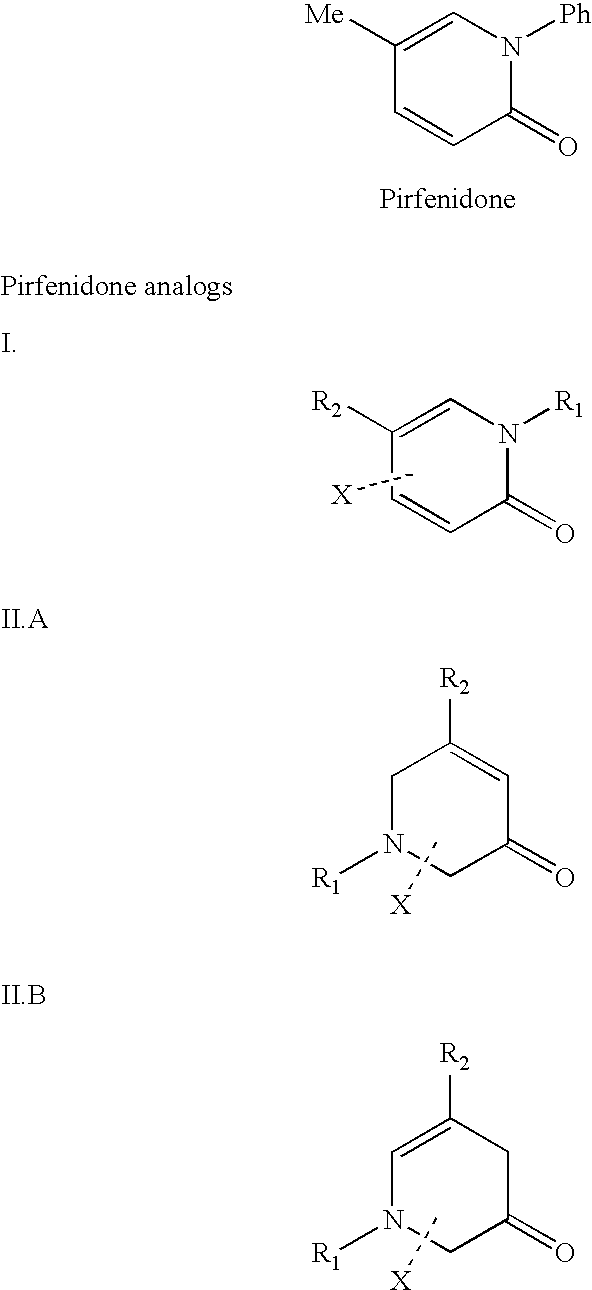Combination therapy for treatment of fibrotic disorders
a technology of fibrotic disease and combination therapy, which is applied in the field of therapy of treating fibrotic diseases, can solve the problems of death, deterioration of pulmonary function, and inability to find the underlying cause of pulmonary fibrosis, so as to achieve the desired therapeutic
- Summary
- Abstract
- Description
- Claims
- Application Information
AI Technical Summary
Benefits of technology
Problems solved by technology
Method used
Image
Examples
Embodiment Construction
[0026] The present invention provides methods of treating fibrotic diseases, including pulmonary fibrosis, idiopathic pulmonary fibrosis (IPF), pulmonary fibrosis from a known etiology, liver fibrosis, cardiac fibrosis, and renal fibrosis. The methods generally involve administering a therapeutically effective combination of IFN-γ and pirfenidone or a specific pirfenidone analog to an individual with a fibrotic disease. In particular, the methods of the invention involve administering to an individual suffering from fibrotic disease a synergistic combination of IFN-γ and pirfenidone or a specific pirfenidone analog.
Methods of Treating Fibrotic Diseases
[0027] The present invention provides methods for treating a fibrotic disorder in an individual having a fibrotic disorder. The method generally involves administering an effective amount of interferon-gamma (IFN-γ), and an effective amount of pirfenidone or a specific analog thereof. The methods provide for treatment of fibrotic di...
PUM
| Property | Measurement | Unit |
|---|---|---|
| Mass | aaaaa | aaaaa |
| Mass | aaaaa | aaaaa |
Abstract
Description
Claims
Application Information
 Login to View More
Login to View More - R&D
- Intellectual Property
- Life Sciences
- Materials
- Tech Scout
- Unparalleled Data Quality
- Higher Quality Content
- 60% Fewer Hallucinations
Browse by: Latest US Patents, China's latest patents, Technical Efficacy Thesaurus, Application Domain, Technology Topic, Popular Technical Reports.
© 2025 PatSnap. All rights reserved.Legal|Privacy policy|Modern Slavery Act Transparency Statement|Sitemap|About US| Contact US: help@patsnap.com

